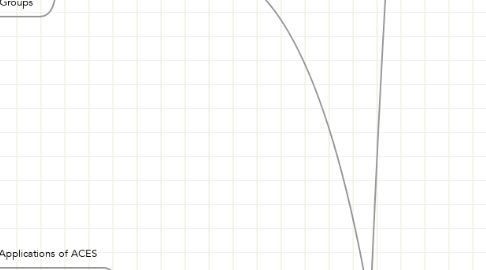
1. Student Expert Research
1.1. Learning to Research
1.1.1. Introduce to ACES Website
1.1.2. Using Search Engines
1.1.3. Animals & Issues
1.2. Split class into 4 Expert Groups
1.2.1. Species - Marine Experts
1.2.1.1. Chart Research for Wall Display
1.2.1.1.1. Habitat
1.2.1.1.2. Food
1.2.1.1.3. Obstacles for Survival
1.2.1.1.4. Adaptations
1.2.1.1.5. Consider each stage of Life Cycle
1.2.2. Bathymetry Experts
1.2.2.1. Chart Research for Wall Display
1.2.2.1.1. Define Normal Habitat
1.2.2.1.2. Effect of Changes in Continental Shelf
1.2.2.1.3. Migrating Patterns - Ocean depth
1.2.3. Phytoplankton Experts
1.2.3.1. Analyze Chlorophyll Imagery
1.2.3.1.1. Consider Seasonal Changes
1.2.3.1.2. Coast versus Open Ocean
1.2.3.1.3. El Nino anomolies
1.2.4. Sea Surface Temperature Experts
1.2.4.1. Analyze Sea Surface Temperature Imagery
1.2.4.1.1. Consider Seasonal Changes
1.2.4.1.2. Consider Currents
1.2.4.1.3. Identify Eddies
1.2.4.1.4. Consider Winds
1.2.4.1.5. Consider Sea Heights
2. Investigations
2.1. Real World Applications of ACES
2.2. Opportunity to Debate Issues
2.2.1. Endangered Species Protection
2.2.1.1. Black Footed Albatross
2.2.1.2. Sea Turtles
2.3. Develop a Sense of Stewardship
2.4. Currently in development
3. Student Lessons
3.1. Ecosystems
3.1.1. Water
3.1.1.1. Open Ocean
3.1.1.2. Deep Sea
3.1.1.3. Polar Sea
3.1.2. Coral reef
3.1.3. Forests
3.1.3.1. Kelp
3.1.3.2. Mangrove
3.1.4. Rocky Shore
3.1.5. Salt Marsh
3.1.6. National Marine Sanctuaries
3.2. Ocean Through Time
3.2.1. Provides food
3.2.1.1. 1700-1800 Seaweed used as fertilizer in Ireland to grow fertilizer
3.2.2. Provides Products
3.2.2.1. 100 BCE Greeks use seaweed as medicine
3.2.3. Recreation
3.2.3.1. 1975 Jaws hits the box office
3.2.4. Trade and navigation
3.2.4.1. 1914 Panama Canal conencts Atlantic and Pacific Oceans completed
3.2.5. Scientific Exploration & Research
3.2.5.1. 1837 Diving suit is redesigned
3.2.6. National Security
3.2.6.1. 1941 Attack of Pearl Harbor
3.2.7. Ecosystem Protection & Management
3.2.7.1. 1972 National Marine Sanctauries Act established
3.3. Humans & The Ocean
3.3.1. Human Impacts
3.3.1.1. Run-off and Phytoplankton
3.3.1.2. Phytoplankton Blooms
3.3.1.2.1. Eutrophication
3.3.1.3. Upstream Impacts
3.3.1.3.1. Point Source Pollution
3.3.1.3.2. Non-Point Source Pollution
3.3.2. Timeline Analysis
3.3.2.1. Recognize the value of ocean
3.4. Bathymetry
3.4.1. Ocean floor is mapped by depth
3.4.2. Students create model
3.4.3. Students analyze bathymetry imagery
3.4.4. Students relate bathymetry to animal movement
3.5. Seasons
3.5.1. Solar intensity changes
3.5.1.1. Tilt of Earth
3.5.2. NOTHING to do with distance from sun
3.5.3. Students label model of earth's revolution around Sun
3.6. Sea Surface Temperature
3.6.1. Students interpret SST imagery
3.6.1.1. Isotherms
3.6.1.2. Currents
3.6.1.2.1. Warm
3.6.1.2.2. Cold
3.6.1.3. Prevailing Winds
3.6.1.4. Gyres
3.6.2. Heat is transfered in Oceans
3.6.3. Stored heat in Ocean makes life hospitable
3.7. Deep Ocean Environment
3.7.1. Pressure Increases with Depth
3.7.2. Temperature Decreases with Depth
3.7.3. Light Decreases with Depth
3.7.4. Submersibles allow research
3.7.5. Animals require adaptations
3.8. Photosynthesis
3.8.1. Phytoplankton
3.8.1.1. Major source of oxygen in atmsophere
3.8.1.2. Producer
3.8.1.3. Found in photic zone
3.8.2. Requires
3.8.2.1. Carbon dioxide
3.8.2.2. Sunlight
3.8.2.2.1. affected by solar intensity & season
3.8.2.3. Nutrients
3.8.2.4. Chlorophyll
3.8.2.4.1. Analyze Chlorophyll Concentration imagery
3.8.2.5. Water
3.8.2.6. Enzymes
3.8.3. Products
3.8.3.1. Oxygen
3.8.3.2. Glucose - sugar
3.8.3.3. Water
3.8.3.4. Used by Consumers
3.9. Biodiversity
3.9.1. Cells
3.9.1.1. Plant cell
3.9.1.1.1. Examples
3.9.1.1.2. Cell wall
3.9.1.1.3. Chloroplasts
3.9.1.2. Animal cell
3.9.2. Groups
3.9.2.1. Fungus
3.9.2.2. Protists
3.9.2.3. True Bacteria
3.9.2.4. Plants
3.9.2.5. Animals
3.9.3. Adaptations
3.9.3.1. Lucky Gene
3.9.3.1.1. Enhance Survival
3.9.3.1.2. Enhance Reproductive Success
3.9.3.2. Behavioral Adaptations
3.9.3.2.1. How organisms move, repsond to danger
3.9.3.2.2. How organisms get energy, reproduce
3.9.3.3. Structural Adaptations
3.9.3.3.1. Body structures
3.9.4. Food webs
3.9.4.1. Producers
3.9.4.2. Consumers
3.10. Animal Tracking
3.10.1. Related to Needs
3.10.1.1. Water Temperature
3.10.1.1.1. Upwellings
3.10.1.2. Dissolved Oxygen
3.10.1.3. Food source
3.10.1.3.1. Phytoplankton Imagery
3.11. Watersheds
3.11.1. Topographic Maps
3.11.1.1. Contour Lines
3.11.2. All land is connected to oceans
3.11.3. Local Water Sampling Project
3.11.3.1. Turbidity
3.11.3.2. Elements
3.11.3.2.1. Nitrogen
3.11.3.2.2. Phosphorus
3.11.3.3. pH
3.11.3.4. Temperature
3.11.3.5. Dissolved Oxygen
3.11.3.6. Measurements
3.11.4. Ocean is salty due to run-off from land!
3.12. Tides
3.12.1. Spring Tides
3.12.2. Neap Tides
3.12.3. Marine animal Reproduction
3.12.3.1. Sea turtles eggs on beaches
4. Student Expert Analysis
4.1. Wall Display
4.1.1. Shared observations
4.2. Student Journals
4.2.1. On-line at ACES website
4.2.2. Write at least every week or two
4.2.3. Observations
4.2.3.1. Data from maps
4.2.3.2. Supporting Images
4.2.4. Justifications
4.2.4.1. Analysis from data
4.2.4.2. Opinions supported by evidence
4.2.5. May be read by scientists
4.3. Marine Species Expert
4.3.1. Report on Movement of Animal
4.3.2. Resource for other Expert Groups
4.4. Bathymetry Expert
4.4.1. Investigate how bathymetry affects movements
4.4.2. Investigate how coastlines affect movements
4.5. Phytoplankton Expert
4.5.1. Investigate how concentration affects movements
4.6. Sea Surface Expert
4.6.1. Investigate how characteristics of sea affect movements
